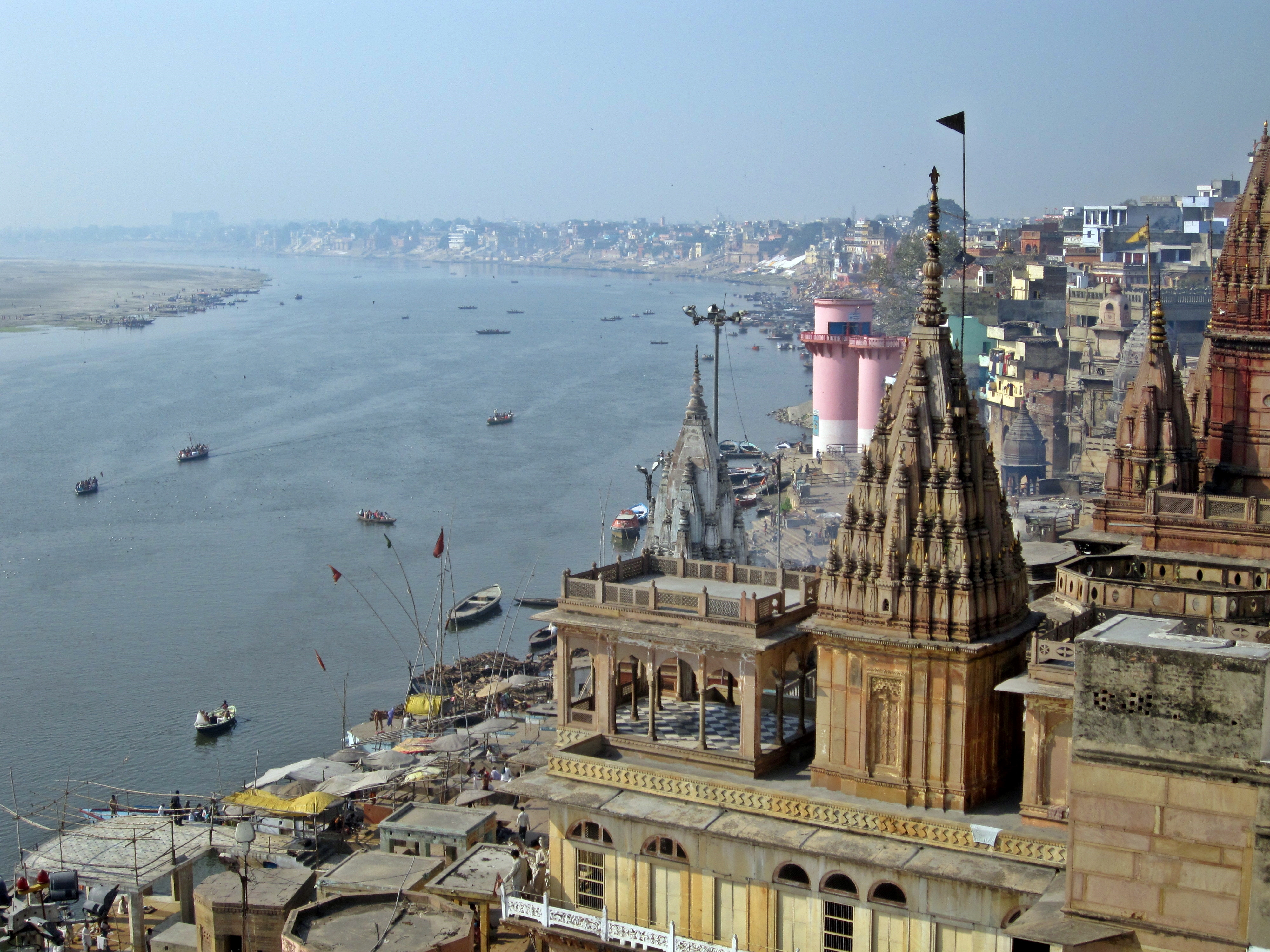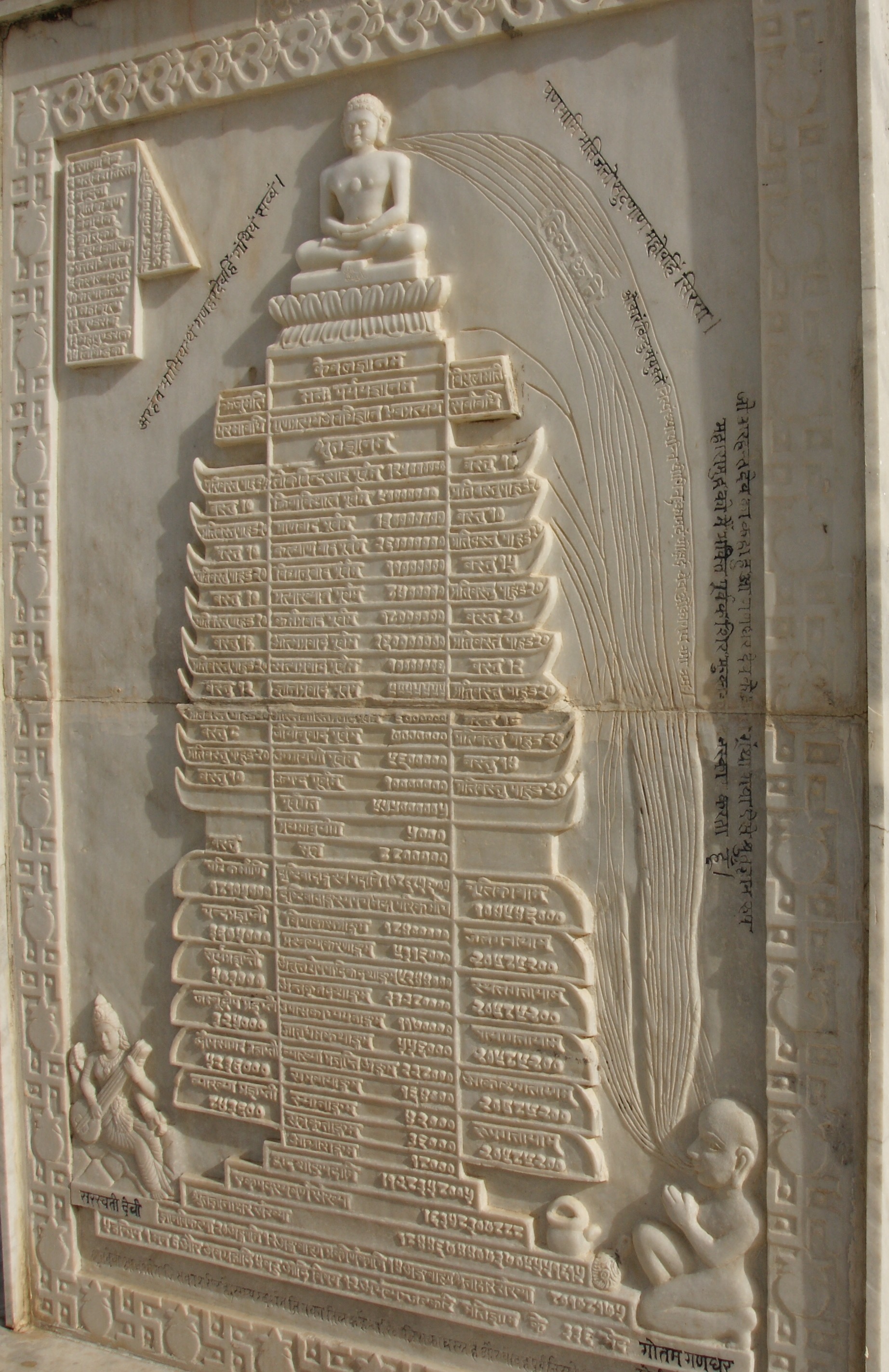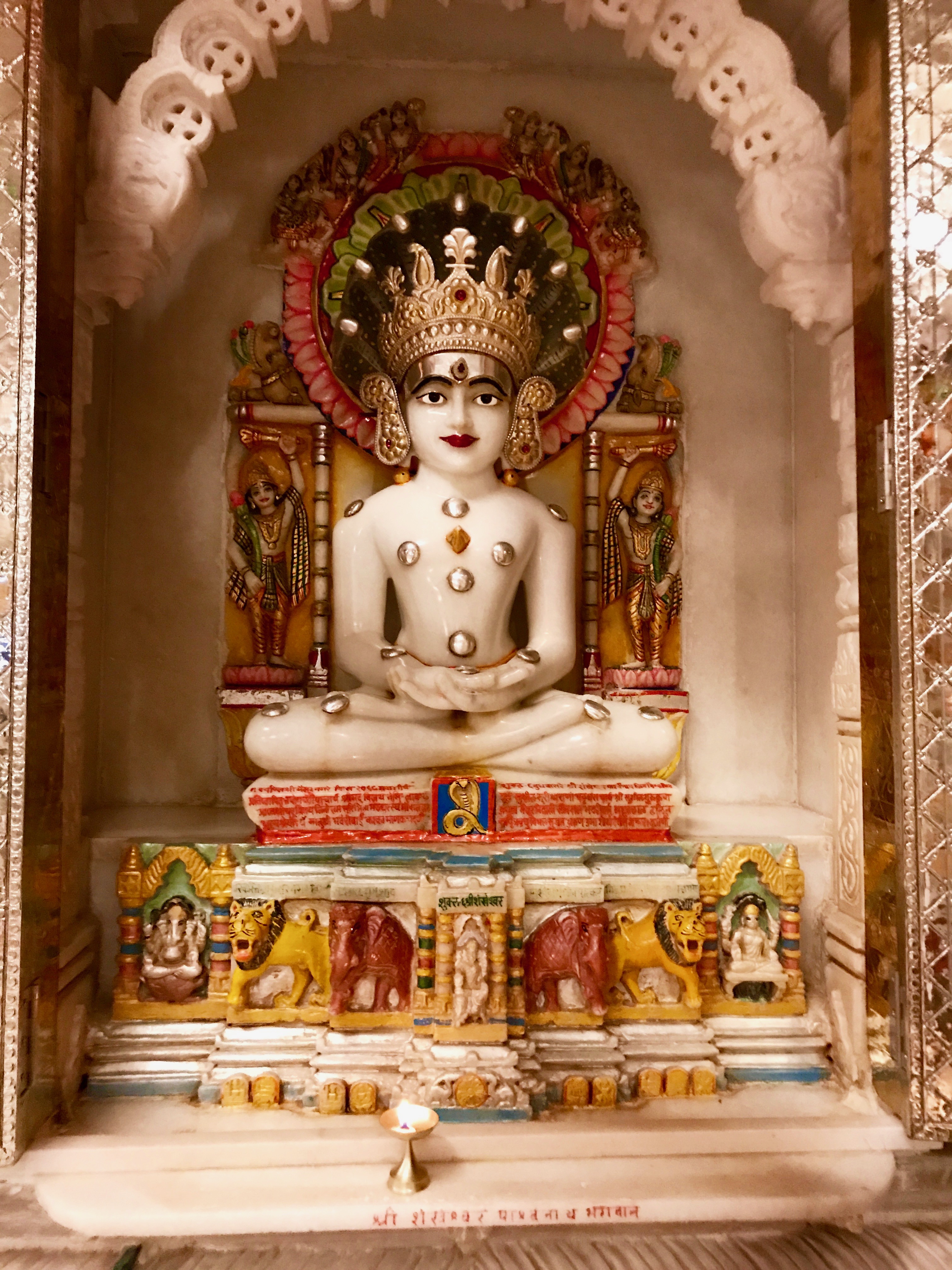|
Parshwanatha
''Parshvanatha'' (), also known as ''Parshva'' () and ''Parasnath'', was the 23rd of 24 ''Tirthankaras'' (supreme preacher of dharma) of Jainism. He is the only Tirthankara who gained the title of ''Kalīkālkalpataru (Kalpavriksha in this "Kali Yuga").'' Parshvanatha is one of the earliest ''Tirthankaras'' who are acknowledged as historical figures. He was the earliest exponent of Karma philosophy in recorded history. The Jain sources place him between the 9th and 8th centuries BCE whereas historians consider that he lived in the 8th or 7th century BCE. Parshvanatha was born 273 years before Mahavira. He was the spiritual successor of 22nd tirthankara Neminatha. He is popularly seen as a propagator and reviver of Jainism. Parshvanatha attained moksha on Mount Sammeda ( Madhuban, Jharkhand) popular as Parasnath hill in the Ganges basin, an important Jain pilgrimage site. His iconography is notable for the serpent hood over his head, and his worship often includes Dharanendra ... [...More Info...] [...Related Items...] OR: [Wikipedia] [Google] [Baidu] |
Padmavati (Jainism)
Padmāvatī is the protective goddess or śāsana devī (शासनदेवी) of Parshvanatha, Pārśvanātha, the twenty-third Jain tirthankara, tīrthāṅkara, complimenting Parshwa yaksha in Swetambara and Dharanendra in digambar the shasan deva. She is a yakshi (attendant goddess) of Parshwanatha. Jain Biography There is another pair of souls of a nāga and Nāga, nāginī who were saved by Parshwanath while being burnt alive in a log of wood by the tapas kamath, and who were subsequently reborn as Indra (Dharanendra in particular) and Padmavati (different from sashan devi) after their death. According to the Jainism, Jain tradition, Padmavati and her husband Dharanendra protected Lord Parshvanatha when he was harassed by Meghmali. After Padmavati rescued Parshvanatha grew subsequently powerful in to yakshi, a powerful tantric deity and surpassed other snake goddess ''Vairotya''. Legacy Worship Goddess Padmavati along with Ambika (Jainism), Ambika, Chakreshvar ... [...More Info...] [...Related Items...] OR: [Wikipedia] [Google] [Baidu] |
Tirthankara
In Jainism, a ''Tirthankara'' (Sanskrit: '; English: literally a 'ford-maker') is a saviour and spiritual teacher of the ''dharma'' (righteous path). The word ''tirthankara'' signifies the founder of a '' tirtha'', which is a fordable passage across the sea of interminable births and deaths, the '' saṃsāra''. According to Jains, a ''Tirthankara'' is an individual who has conquered the ''saṃsāra'', the cycle of death and rebirth, on their own, and made a path for others to follow. After understanding the true nature of the self or soul, the ''Tīrthaṅkara'' attains '' Kevala Jnana'' (omniscience). Tirthankara provides a bridge for others to follow the new teacher from ''saṃsāra'' to ''moksha'' (liberation). In Jain cosmology, the wheel of time is divided in two halves, Utsarpiṇī' or ascending time cycle and ''avasarpiṇī'', the descending time cycle (said to be current now). In each half of the cosmic time cycle, exactly twenty-four ''tirthankaras'' grace thi ... [...More Info...] [...Related Items...] OR: [Wikipedia] [Google] [Baidu] |
Jharkhand
Jharkhand (; ; ) is a state in eastern India. The state shares its border with the states of West Bengal to the east, Chhattisgarh to the west, Uttar Pradesh to the northwest, Bihar to the north and Odisha to the south. It has an area of . It is the 15th largest state by area, and the 14th largest by population. Hindi is the official language of the state. The city of Ranchi is its capital and Dumka its sub-capital. The state is known for its waterfalls, hills and holy places; Baidyanath Dham, Parasnath, Dewri and Rajrappa are major religious sites. The state was formed on 15 November 2000, after carving out what was previously the southern half of Bihar. Jharkhand suffers from what is sometimes termed a resource curse: it accounts for more than 40% of the mineral resources of India, but 39.1% of its population is below the poverty line and 19.6% of children under five years of age are malnourished. Jharkhand is primarily rural, with about 24% of its population living in ... [...More Info...] [...Related Items...] OR: [Wikipedia] [Google] [Baidu] |
Buddhist Texts
Buddhist texts are those religious texts which belong to the Buddhist tradition. The earliest Buddhist texts were not committed to writing until some centuries after the death of Gautama Buddha. The oldest surviving Buddhist manuscripts are the Gandhāran Buddhist texts, found in Afghanistan and written in Gāndhārī, they date from the first century BCE to the third century CE. The first Buddhist texts were initially passed on orally by Buddhist monastics, but were later written down and composed as manuscripts in various Indo-Aryan languages (such as Pāli, Gāndhārī, and Buddhist Hybrid Sanskrit) and collected into various Buddhist Canons. These were then translated into other languages such as Buddhist Chinese (''fójiào hànyǔ'' 佛教漢語) and Classical Tibetan as Buddhism spread outside of India. Buddhist texts can be categorized in a number of ways. The Western terms "scripture" and "canonical" are applied to Buddhism in inconsistent ways by West ... [...More Info...] [...Related Items...] OR: [Wikipedia] [Google] [Baidu] |
Hermann Jacobi
Hermann Georg Jacobi (11 February 1850 – 19 October 1937) was an eminent German Indologist. Education Jacobi was born in Köln (Cologne) on 11 February 1850. He was educated in the gymnasium of Cologne and then went to the University of Berlin, where initially he studied mathematics, but later, probably under the influence of Albrecht Weber, switched to Sanskrit and comparative linguistics, which he studied under Weber and Johann Gildemeister. He obtained his doctorate from the University of Bonn. The subject of his thesis, written in 1872, was the origin of the term "hora" in Indian astrology. Jacobi was able to visit London for a year, 1872–1873, where he examined the Indian manuscripts available there. The next year, with Georg Buehler, he visited Rajasthan, India, where manuscripts were being collected. At Jaisalmer Library, he came across Jain Manuscripts, which were of abiding interest to him for the rest of his life. He later edited and translated many of the ... [...More Info...] [...Related Items...] OR: [Wikipedia] [Google] [Baidu] |
Jain Text
Jain literature (Sanskrit: जैन साहित्य) refers to the literature of the Jain religion. It is a vast and ancient literary tradition, which was initially transmitted orally. The oldest surviving material is contained in the canonical ''Jain Agamas,'' which are written in Ardhamagadhi, a Prakrit ( Middle-Indo Aryan) language. Various commentaries were written on these canonical texts by later Jain monks. Later works were also written in other languages, like Sanskrit and Maharashtri Prakrit. Jain literature is primarily divided between the canons of the ''Digambara'' and ''Śvētāmbara'' orders. These two main sects of Jainism do not always agree on which texts should be considered authoritative. More recent Jain literature has also been written in other languages, like Marathi, Tamil, Rajasthani, Dhundari, Marwari, Hindi, Gujarati, Kannada, Malayalam and more recently in English. Beliefs The Jain tradition believes that their religion is eternal, and the ... [...More Info...] [...Related Items...] OR: [Wikipedia] [Google] [Baidu] |
Paul Dundas
Paul Dundas (born 1952) is a scholar and a senior lecturer in Sanskrit language and head of Asian Studies in the University of Edinburgh. His main areas of academic and research interest include Jainism, Buddhism, classical Sanskrit literature and Middle Indo-Aryan philology. He is regarded as one of the leading western scholars in Jain studies. He is currently a member of the Council of the Pali Text Society. Bibliography and research papers Bibliography Following is the partial list of his books: *Dundas, P. (1992). ''The Jains. '' The Library of religious beliefs and practices. London: Routledge. *Dundas, P. (1998). ''The meat at the wedding feasts: Kr̥ṣṇa, vegetarianism and a Jain dispute. '' oronto Centre for South Asian Studies, University of Toronto. OCLC Number: 43745945 *Alphen, J. v., Pal, P., & Dundas, P. (2000). ''Steps to liberation: 2,500 years of Jain art and religion. '' Antwerpen: Etnografisch Museum. OCLC Number: 44834857 *Dundas, P. (2007). ''Histo ... [...More Info...] [...Related Items...] OR: [Wikipedia] [Google] [Baidu] |
Acharanga Sutra
The Acharanga Sutra (; First book c. 5th–4th century BCE; Second book c. 2nd–1st century BCE) is the first of the twelve Angas, part of the agamas (religious texts) which were compiled based on the teachings of 24th Jina Mahavira. The existing text of the Acharanga Sutra which is used by the Svetambara sect of Jainism was recompiled and edited by KshamaShraman Devardhigani, who headed the council held at Valabhi c. 454 CE. The Digambaras do not recognize the available text, and regard the original text as having been lost in its original form. The Digambara text, ''Mulachara'' is said to be derived from the original Acharanga and discusses the conduct of a Digambara monk. Introduction The Acharanga Sutra is the oldest agam, from a linguistic point of view, written in Ardhamagadhi Prakrit. The Sutra contains two books, or Srutaskandhas. The first book is the older part, to which other treatises were later added. It describes the conduct and behavior of ascetic life: the ... [...More Info...] [...Related Items...] OR: [Wikipedia] [Google] [Baidu] |
Ahimsa
Ahimsa (, IAST: ''ahiṃsā'', ) is the ancient Indian principle of nonviolence which applies to all living beings. It is a key virtue in most Indian religions: Jainism, Buddhism, and Hinduism.Bajpai, Shiva (2011). The History of India – From Ancient to Modern Times', Himalayan Academy Publications (Hawaii, USA), ; see pages 8, 98 Ahimsa is one of the cardinal virtues of Jainism, where it is the first of the Pancha Mahavrata. It is also the first of the five precepts of Buddhism. ''Ahimsa'' is a multidimensional concept,John Arapura in K. R. Sundararajan and Bithika Mukerji Ed. (1997), Hindu spirituality: Postclassical and modern, ; see Chapter 20, pages 392–417 inspired by the premise that all living beings have the spark of the divine spiritual energy; therefore, to hurt another being is to hurt oneself. ''Ahimsa'' is also related to the notion that all acts of violence has karmic consequences. While ancient scholars of Brahmanism already investigated and refined th ... [...More Info...] [...Related Items...] OR: [Wikipedia] [Google] [Baidu] |
Śvētāmbara
The Śvētāmbara (; ''śvētapaṭa''; also spelled ''Shwethambara'', ''Svetambar'', ''Shvetambara'' or ''Swetambar'') is one of the two main branches of Jainism, the other being the ''Digambara''. Śvētāmbara means "white-clad", and refers to its ascetics' practice of wearing white clothes, which sets it apart from the ''Digambara'' "sky-clad" Jains, whose ascetic practitioners go naked. Śvētāmbaras, unlike Digambaras, do not believe that ascetics must practice nudity. The Svetambara and Digambara traditions have had historical differences ranging from their dress code, their temples and iconography, attitude towards Jain nuns, their legends and the texts they consider as important. Svetambara Jain communities are currently found mainly in Gujarat, Rajasthan and coastal regions of Maharashtra. According to Jeffery D. Long, a scholar of Hindu and Jain studies, about four-fifths of all Jains in India are Svetambaras. History Majority of the Svetambaras are ''murtipujak ... [...More Info...] [...Related Items...] OR: [Wikipedia] [Google] [Baidu] |
Digambara
''Digambara'' (; "sky-clad") is one of the two major schools of Jainism, the other being ''Śvētāmbara'' (white-clad). The Sanskrit word ''Digambara'' means "sky-clad", referring to their traditional monastic practice of neither possessing nor wearing any clothes. Digambara and Śvētāmbara traditions have had historical differences ranging from their dress code, their temples and iconography, attitude towards female monastics, their legends, and the texts they consider as important. Digambara monks cherish the virtue of non-attachment and non-possession of any material goods. Monks carry a community-owned ''picchi'', which is a broom made of fallen peacock feathers for removing and thus saving the life of insects in their path or before they sit. The Digambara literature can be traced only to the first millennium, with its oldest surviving sacred text being the mid-second century ''Ṣaṭkhaṅḍāgama'' "Scripture in Six Parts" of Dharasena (the Moodabidri manuscripts) ... [...More Info...] [...Related Items...] OR: [Wikipedia] [Google] [Baidu] |
Jain Sects
Jainism is an Indian religion which is traditionally believed to be propagated by twenty-four spiritual teachers known as ''tirthankara''. Broadly, Jainism is divided into two major schools of thought, Digambara and Svetambara. These are further divided into different sub-sects and traditions. While there are differences in practices, the core philosophy and main principles of each sect is the same. Schism Traditionally, the original doctrine of Jainism was contained in scriptures called Purva. There were fourteen Purva. These are believed to have originated from Rishabhanatha, the first ''tirthankara''. There was a twelve-year famine around fourth century BCE. At that time, Chandragupta Maurya was the ruler of Magadha and Bhadrabahu was the head of Jain community. Bhadrabahu went south to Karnataka with his adherents and Sthulabhadra, another Jain leader remained behind. During this time the knowledge of the doctrine was getting lost. A council was formed at Pataliputra ... [...More Info...] [...Related Items...] OR: [Wikipedia] [Google] [Baidu] |








